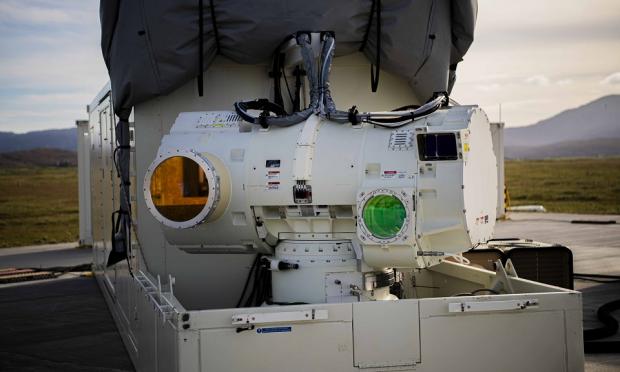After the Russians, now the Chinese are also arming Tehran, to which they have lent billions of dollars and naturally don’t want to lose.
Incredible geopolitical, economic, and military games and interests lie behind the war tensions between Iran and Israel, which the human mind can barely grasp.
A war between Israel and the U.S. against Iran, and a possible regime change in the country, would literally turn all Chinese plans upside down—from the rail and road connection with Turkey and the EU along the Silk Road, to Beijing’s loans to Tehran.
Iran is now deploying Chinese Laser Weapon System to protect high-value targets
China has secretly sent a new advanced laser defense system to Iran, according to an image published on Mehdi H’s X account on October 4, 2024.
Initial analyses suggest that this laser system could be the Shen Nung, made in China.
The Shield 3000/5000 laser system, also known as "Silent Hunter," has acquired this cutting-edge technology to boost its defensive capabilities against low-altitude threats.
The system is a Low Altitude Laser Defense System (LASS), characterized by its ability to target and neutralize unmanned aerial vehicles (UAVs) and other low-flying objects.
The "Silent Hunter" variant is an electric fiber-optic laser weapon system developed by China. It features output power ranging between 30 and 100 kilowatts, allowing it to effectively engage targets across various ranges and altitudes.
One of the remarkable features of the Silent Hunter is its maximum operational range of 4 kilometers.
At a distance of 800 meters, it is capable of piercing 10 millimeters of steel, demonstrating its power against armored targets.
This capability makes it a significant asset for countering drone swarms and protecting critical infrastructure from aerial threats.
The recent defense ties between Iran and China reflect a deepening of strategic cooperation, highlighted by a 25-year comprehensive cooperation agreement signed in 2021.
This agreement, aimed at enhancing Iran’s military and technological capabilities, includes joint military training, intelligence sharing, and the sale of significant weapons.
The agreement allows China to use Iranian air and naval facilities, particularly in the Persian Gulf, bolstering the positions of both nations in the region amid shifting geopolitical alliances.
China’s defense partnerships include technology transfers and training aimed at boosting Iran’s anti-access and area denial capabilities, particularly against aerial and maritime threats.
As part of this cooperation, Iran may gain access to advanced Chinese weapons, including anti-drone systems and missile technologies.
This defense alliance positions both countries as strategic counterweights to U.S. influence in the Middle East.
China’s "Silent Hunter" laser defense system, recently spotted in Tehran, exemplifies the potential weapon transfers supporting Iran’s defense infrastructure against low-altitude aerial threats, marking a significant step forward in bilateral military cooperation.
Lasers Can Disable or Destroy Drones Almost Immediately by Targeting Their Sensors or Structural Components, Making Them Ideal for Countering Low-Flying Small UAV Swarms.
Several armed forces around the world are moving toward laser weapon systems to address the growing threat of drones and other aerial targets.
The U.S. Army, for example, is developing the High Energy Laser Weapon System (HELWS) to neutralize UAVs and missiles, with tests showing promising results in both mobile and fixed defensive settings.
Similarly, Israel’s "Iron Beam" is a high-power laser system designed to intercept drones, mortars, and missiles at close range, complementing the Iron Dome missile defense system.
In Europe, Germany has tested its own laser systems within the Bundeswehr for similar drone defense applications.
Iranian pilots in Russia
According to media sources, 40 Iranian pilots have traveled to Russia to train on Russian Su-35 fighter jets.
This move signifies a significant expansion of military cooperation between Tehran and Moscow. This information surfaced on social media.
The dispatch of pilots to Russia is part of a previously established agreement between the two countries, which includes the transfer of modern Russian combat aircraft to Iran.
The Su-35 is a multifunctional fourth-generation fighter with fifth-generation elements, known for its high agility and capability to strike both aerial and ground targets.
Experts estimate that if anything happens in Iran, the Russian-made Su-35 fighter jets will likely have Russian pilots—potentially mercenaries from Wagner-given that proper pilot training requires many months and even years. There have been no official comments from Moscow on this matter yet.





